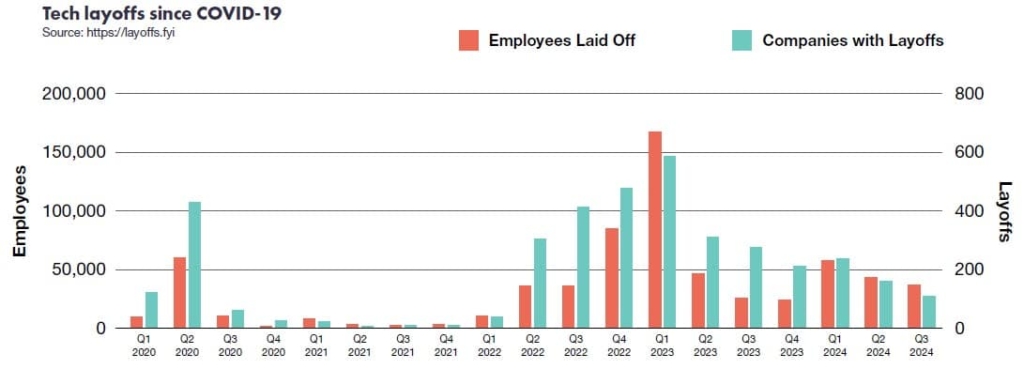Additionally, insights from the Eduventures Adult Learning Demand report reaffirm this, highlighting that the number one expectation for prospective students considering graduate degrees is to increase their earning potential.² Furthermore, with employers increasingly shifting toward skills-based hiring, the emphasis on equipping students with relevant, in-demand skills has never been more critical.³
These characteristics influence what degrees prospective students get. Historically and contemporarily, business graduate degrees are the market’s largest segment. The top five largest graduate degree areas by the number of 2023 graduates are shown in the chart below4:

Each of these degree areas offers unique advantages. For example, an MBA is widely seen as a pathway to lucrative careers, while advanced degrees in education and health are often necessary for professional licensure and career advancement. Tech-related degrees, such as computer science, have seen significant growth due to industry demand, growing 69% since 2019 and 50% from 2022-2023.5
As technology advances rapidly, adapting curricula to evolving market demands is essential for ensuring that graduates are competitive. In the next section, we explore a real-world example of how universities can leverage data to align their programs with current job market trends.
Software Engineering

- Net change in postings with skill, to determine whether the demand for a skill has risen over the timeframe.
- Difference in number of job postings and candidate profiles (e.g., Linkedin) with the given skill, to see what skills have a higher employer demand than candidate supply.
The Importance of Regular Skills Analyses
Skills-based market analysis should be a regular part of any program strategy. In rapidly changing fields like technology, this should be done annually, if not more frequently, to ensure that programs remain relevant and that students graduate with skills that align with industry needs.
Incorporating up-to-date, in-demand skills into program curricula is vital for keeping graduates competitive. Institutions should routinely assess market trends and adjust their offerings to meet current employer demands. Partnering with Elsmere Education can help universities ensure their programs are aligned with the latest labor market needs.
Unlock Sustainable Growth with Data-Driven Strategies
1 Third way. Accessed September 2024. https://www.thirdway.org/memo/employment-and-earnings-outcomes-shape-graduate-students-perceptions-of-program-value.
2 Eduventures Research. Adult Learning Demand Update: Consumer Data in the Post-Pandemic Market. Encoura, 2023. https://encoura.org.
³ Eduventures. Adult Learning Demand Update. 2023. https://encoura.org.
4 Lightcast, Program Table, 2024.
5 Ibid
6 https://layoffs.fyi/
7 Lightcast, Job Postings Report, 2024.







